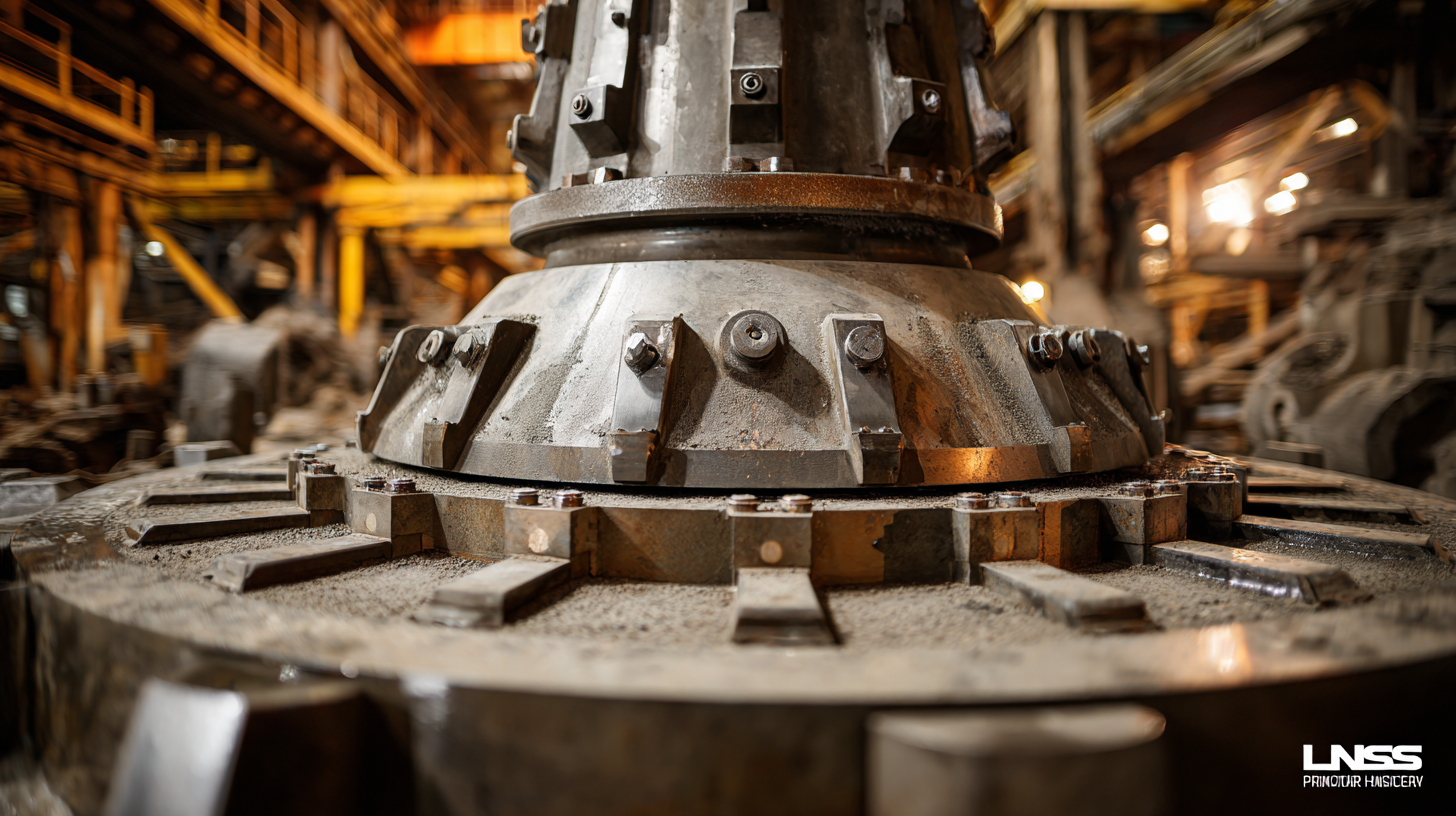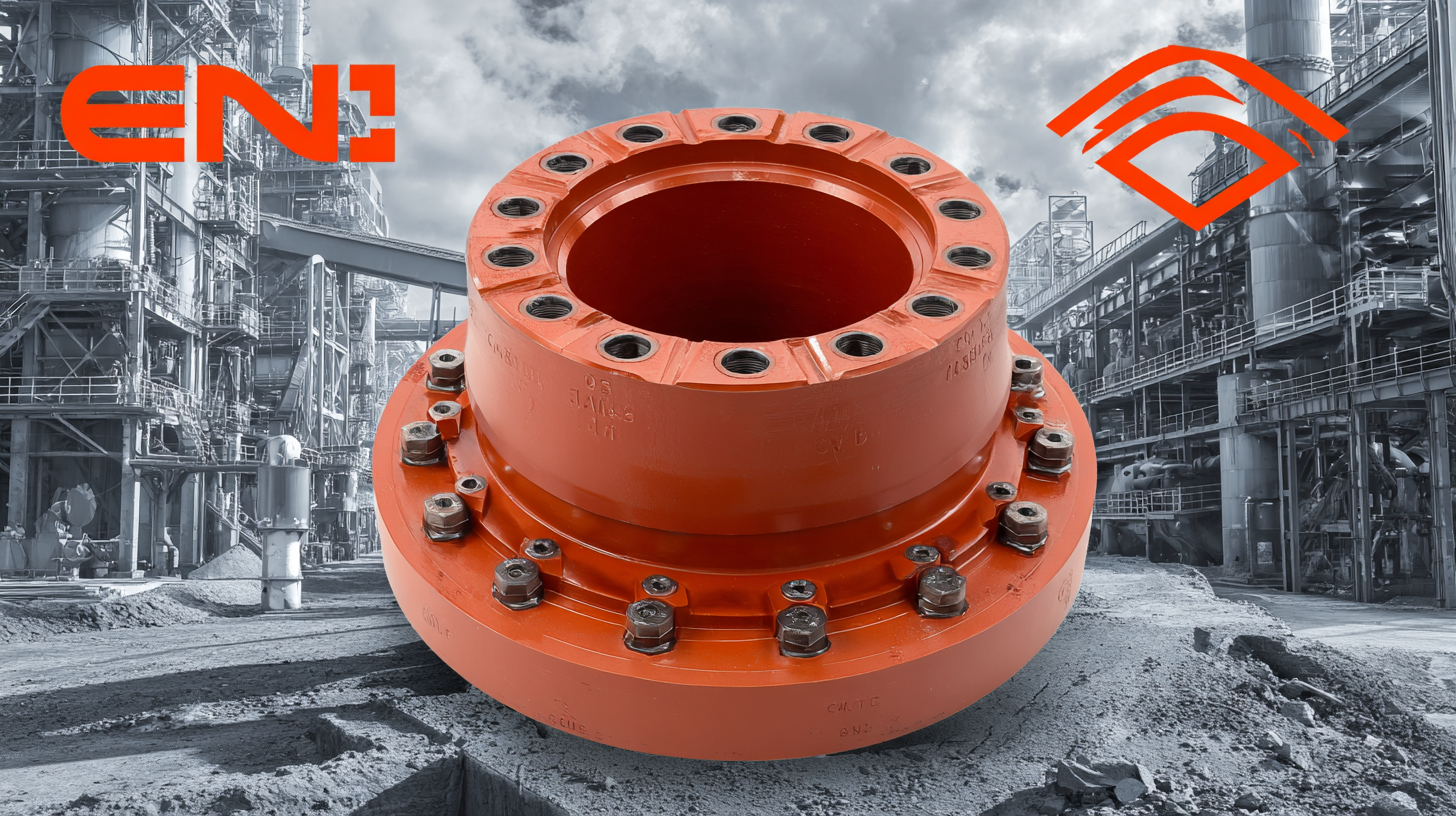
-
Home
-
About Us
-
Products
-
News
-
Blog
-
Contact Us
Leave Your Message

In today's competitive landscape of global manufacturing, the quality and durability of components like the Cone Crusher Bowl Liner play a critical role in the efficiency and longevity of crushing operations. According to a recent report by Allied Market Research, the global cone crusher market is expected to reach $2.2 billion by 2027, driven by the increasing demand from construction and mining industries. As companies seek to improve operational performance and reduce downtime, the significance of high-standard bowl liners cannot be overstated. These liners not only enhance the overall crushing process but also significantly affect the maintenance costs and operational lifespan of equipment. As manufacturers strive to elevate their production standards, understanding the nuances of Cone Crusher Bowl Liner technology becomes imperative for staying ahead in this rapidly evolving market.

 Cone crusher bowl liners play a crucial role in the manufacturing process, serving as vital components that ensure optimal performance and efficiency in crushing operations. These liners are designed to withstand the multiple forces exerted during the crushing process and must be engineered with precision to fit the specific models of cone crushers. The right bowl liner not only enhances the lifespan of the equipment but also improves the overall quality of the output material, enabling businesses to achieve higher production rates with reduced operational costs.
Cone crusher bowl liners play a crucial role in the manufacturing process, serving as vital components that ensure optimal performance and efficiency in crushing operations. These liners are designed to withstand the multiple forces exerted during the crushing process and must be engineered with precision to fit the specific models of cone crushers. The right bowl liner not only enhances the lifespan of the equipment but also improves the overall quality of the output material, enabling businesses to achieve higher production rates with reduced operational costs.
The importance of choosing high-quality bowl liners cannot be overstated. They contribute directly to the effectiveness of material reduction and play a significant role in protecting the integrity of the crushing chamber. The ability to maintain structural stability under extreme conditions is essential for ensuring that the crusher operates smoothly over time. As global manufacturing standards continue to rise, the demand for durable and efficient cone crusher bowl liners has become increasingly critical, compelling manufacturers to innovate and elevate their production practices to meet the evolving needs of the industry.
The production of high-performance bowl liners for cone crushers is pivotal in elevating global manufacturing standards. These liners play a crucial role in achieving optimum crushing performance and a longer service life. Key technical specifications such as material composition, hardness, and design geometry are essential to maximizing their effectiveness. According to a recent report by Freedonia Group, demand for categorized wear parts like bowl liners is projected to grow at around 5.2% annually through 2025, underscoring the rising importance of these components in the manufacturing sector.
Material selection is a critical factor in the performance of bowl liners. The most commonly used materials include manganese steel, alloy steel, and ceramic composites, each providing distinct advantages in terms of wear resistance and durability. Hardness levels are also vital, with optimal configurations typically around 17% manganese content, ensuring a balance between toughness and wear resistance. Additionally, advanced manufacturing techniques like precision casting and 3D printing are being adopted to enhance the geometrical accuracy and performance of bowl liners, thus pushing the boundaries of wear part efficiency in heavy machinery. Reports indicate that innovative liners can reduce operational costs by as much as 25%, making advancements in this area not only beneficial but essential for competitive manufacturing.
| Specification | Value | Units |
|---|---|---|
| Material Composition | High Manganese Steel | - |
| Hardness | HRC 48-52 | - |
| Weight | 500 | kg |
| Dimensions (Diameter) | 800 | mm |
| Thickness | 150 | mm |
| Service Life | 3500 | hours |
| Compatibility | Various Models | - |
When it comes to cone crusher bowl liners, the choice of materials and coatings can significantly influence performance and longevity. High-quality bowl liners are often made from advanced alloys that provide enhanced wear resistance, which is crucial in the demanding environments of mining and aggregate production. These materials are designed to withstand the high impact and abrasive conditions often encountered, ultimately leading to improved productivity and reduced downtime.
To maximize the effectiveness of cone crusher bowl liners, consider implementing various protective coatings. These coatings can provide an additional layer of defense against wear and corrosion. For example, ceramic and carbide coatings are popular choices among manufacturers for their ability to extend the operational life of liners in harsh conditions. Regular inspections and maintenance can also help in identifying wear patterns early, thus optimizing the replacement cycle and ensuring consistent performance.
**Tips for Maintaining Cone Crusher Bowl Liners**: Regularly monitor the condition of the liners and replace them before they become excessively worn. Implement a lubrication routine to reduce friction and wear. Finally, consider the environmental factors that can affect liner performance, such as temperature and the type of material being crushed, to make informed decisions about material selection and maintenance practices.
In the competitive landscape of global manufacturing, the production of high-quality cone crusher bowl liners has become increasingly critical. Effective quality control measures are essential for ensuring that these components meet industry standards and can withstand the rigorous demands of crushing operations. According to a recent report by Grand View Research, the global mining equipment market, which includes cone crushers, is expected to grow at a CAGR of 5.4% from 2021 to 2028, highlighting the need for reliable manufacturing practices.
To enhance quality control, manufacturers are adopting advanced techniques such as Total Quality Management (TQM) and Six Sigma. These methodologies focus on reducing defects and improving process efficiency. A study by the European Journal of Operational Research indicates that companies implementing Six Sigma can improve operational performance by up to 30%, translating to significant cost savings and better product reliability. Additionally, the use of materials with proven durability, such as high-carbon manganese steel, is crucial for the longevity of bowl liners, as these materials can increase wear resistance and reduce replacement frequency, further underscoring the importance of stringent quality control measures in manufacturing processes.
Elevating the design and production of cone crusher bowl liners is vital for enhancing global manufacturing standards in the mining and aggregate industries. Recent innovations have emphasized optimizing performance through a deeper understanding of key factors such as kinematics, chamber configurations, release forces, and power ratings. By applying these principles, manufacturers can ensure that bowl liners are more effective at minimizing wear and extending the lifespan of the crusher.
 Tips for improving the performance of cone crusher bowl liners include regular maintenance to monitor wear patterns and timely replacements. Implementing predictive modeling can also help in anticipating liner wear based on material motion characteristics, thereby enhancing operational efficiency. Additionally, investing in advanced manufacturing techniques can lead to the production of bowl liners that are not only more resilient but also more compatible with the latest high-performance cone crushers.
Tips for improving the performance of cone crusher bowl liners include regular maintenance to monitor wear patterns and timely replacements. Implementing predictive modeling can also help in anticipating liner wear based on material motion characteristics, thereby enhancing operational efficiency. Additionally, investing in advanced manufacturing techniques can lead to the production of bowl liners that are not only more resilient but also more compatible with the latest high-performance cone crushers.
Furthermore, to maximize output and reliability, it is essential to consider the specific application parameters of each crunching task. Tailoring bowl liner design to align with these parameters can significantly improve overall crushing performance, leading to greater productivity in material processing. Keeping abreast of technological advancements in the industry will facilitate the adoption of these innovative designs, forging a path toward superior manufacturing standards.